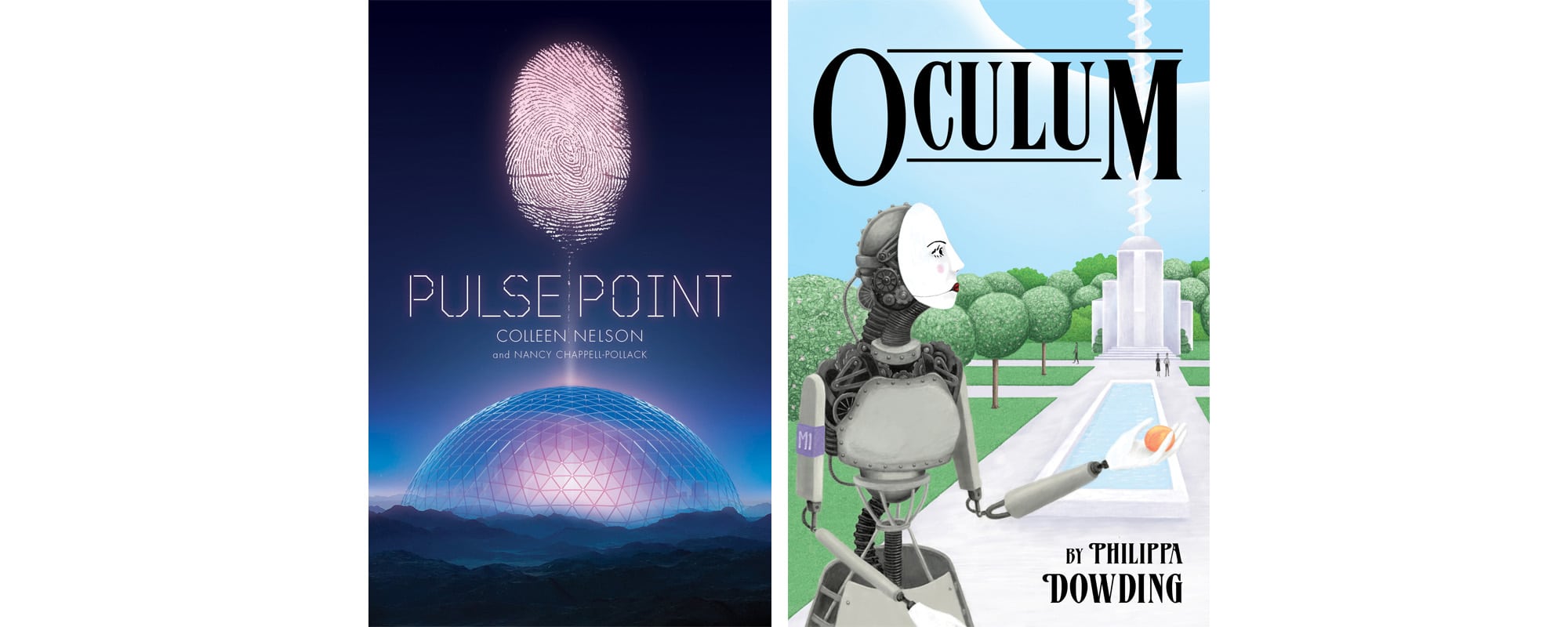 Post-catastrophe dystopia-disguised-as-utopia narratives are a mainstay of literature for teens and have been for years. From The Giver to The Hunger Games, these stories feature citizens with their rights and freedoms subjugated for the “greater good” and cruelty masquerading as order. It’s a genre that only feels more prescient as our world marches ever closer to environmental devastation and certain world leaders lean further toward totalitarianism. Teens clearly want to explore these ideas, and for young readers who have not encountered much in the genre before, two new books provide a solid entry point, thanks to their fast pace and clear prose.
Post-catastrophe dystopia-disguised-as-utopia narratives are a mainstay of literature for teens and have been for years. From The Giver to The Hunger Games, these stories feature citizens with their rights and freedoms subjugated for the “greater good” and cruelty masquerading as order. It’s a genre that only feels more prescient as our world marches ever closer to environmental devastation and certain world leaders lean further toward totalitarianism. Teens clearly want to explore these ideas, and for young readers who have not encountered much in the genre before, two new books provide a solid entry point, thanks to their fast pace and clear prose.
Pulse Point, by Colleen Nelson and Nancy Chappell-Pollack, begins in the domed City, where Kaia and her fellow citizens spend their days running in place in order to generate sufficient energy to power the enclosed world they inhabit. All energy consumption and production is controlled by an electronic pulse point, located in the tip of each citizen’s finger. Outside the dome of the City, there’s nothing good – just unforgiving wilderness and a few hostile Primitives. But the City is also unforgiving – its Councilors tell its citizens what to do and eliminate those who can’t pull their weight.
Kaia is just trying to get by. Her father’s mental instability and her grandmother’s increasing age make it harder and harder to protect her family. She also has to hide her forbidden feelings for her best friend Lev, who – as an overseer and the son of Councilor Tar – is the last person she can hope to make a life with. When her pulse point mysteriously stops working and offers her potential freedom, at first it seems like things are looking up. But then the overseers come for her grandmother, and she has to face a tough decision: remain complicit in the City’s actions or venture into the hazardous world outside.
The concepts, character arcs, and plot elements of Pulse Point are very familiar, and it’s hard to become invested in the revelations that shock Kaia when they feel like dystopia-by-numbers. Kaia often lets her fate be determined by things that happen to her instead of taking initiative, and the ending is a bit of a tease – a crew is rallied for a revolution, but the book ends before the uprising takes place. Perhaps this action is being saved for a sequel, but by ending before the climax, Pulse Point wraps up too soon to truly satisfy.
Aimed at a slightly younger audience, Philippa Dowding’s Oculum starts out with a similar premise. Miranda1 has spent her whole life inside the dome of Oculum, where she is the eldest of the 1,000 child occupants who are cared for and policed by robot mothers and sentries. The children study and tend to the fruit trees that feed them, and, sometimes, Oculum’s dome opens and shows them the sky. Then one day, Miranda1’s closest friend finds a door in the wall of their world, making them question what lies outside and whether they should try to reach it.
In alternating chapters, we meet 12-year-old Mannfred. He lives in an undomed part of the world, where some sort of apocalypse has wiped out technology. Toxic black rains fall, bees are extinct, and fruit is a myth. Mannfred lives a hardscrabble existence with Grannie and a pack of other wayward children. When the black rain floods their home, they set out for the city to find a new one. When they discover the huge, sealed dome, they instantly wonder what might be inside.
Oculum’s tone has a folksy and whimsical quality that lends more personality to this familiar narrative. Both Miranda1’s and Mannfred’s worlds, though very different, feel like something from a fairy tale. The details the reader is given about the time of the Olden Begones (before the apocalypse) are fun to reconcile with our own present-day, and when characters find broken pieces from computer keyboards or reference the works of William Shakespeare, it creates a satisfying connection between this fictional future and our current reality.
Miranda1 and Mannfred are satisfyingly active protagonists, whose questions and decisions move the plot forward. While Oculum is simple in its scope, its rich world-building and determined characters give it an originality that sets it apart from similar stories.
 Contact us via email
Contact us via email

